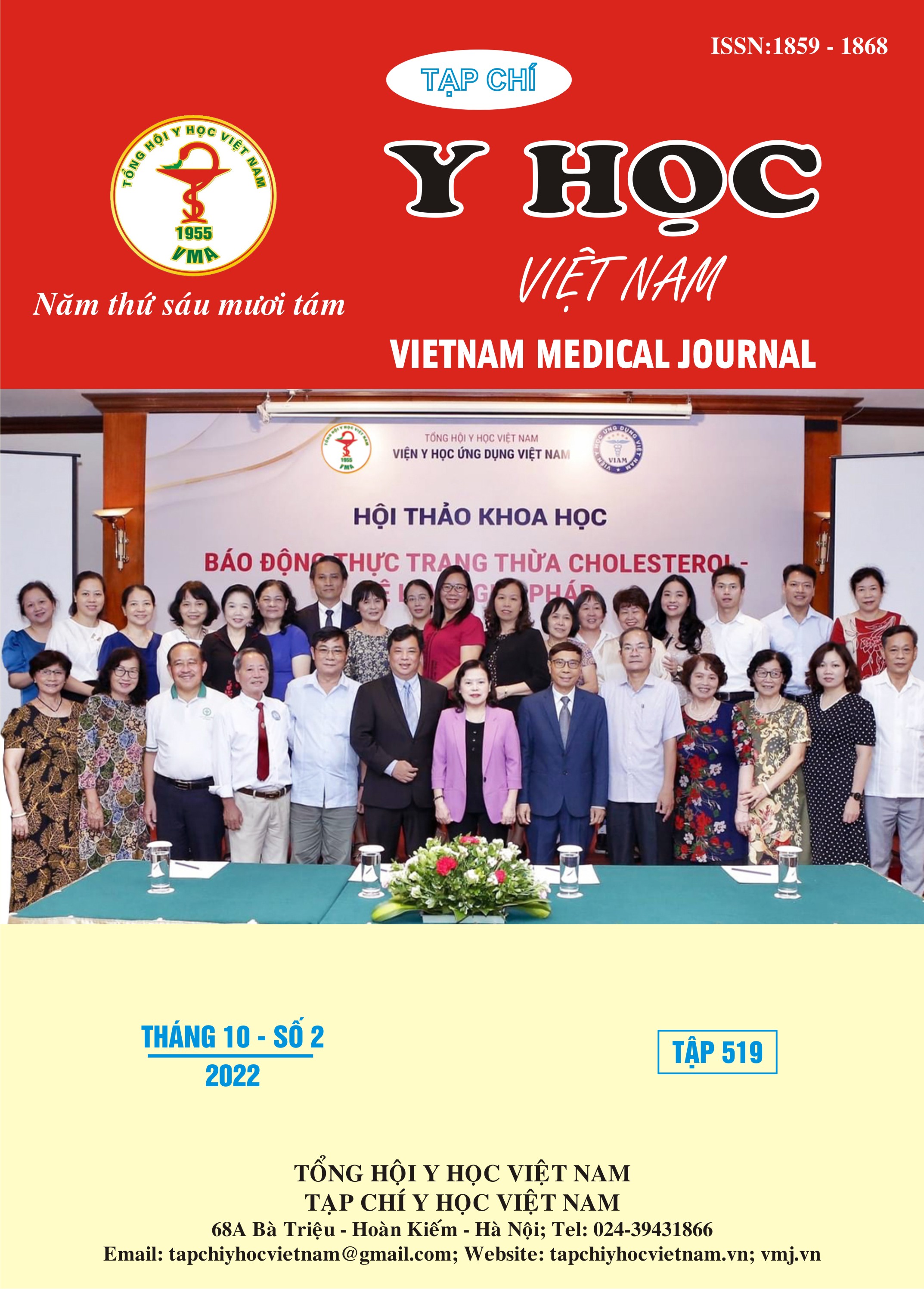RESULTS OF SURGERY DOING OPEN STRUCTURAL RHINOPLASTY BY ARTIFICIAL MATERIALS AND AUTOLOGOUS CARTILAGE
Main Article Content
Abstract
Objectives: Describe the results of rhinoplasty surgery with artificial material streaks combined with autologous cartilage. Subjects and methods: A case series descriptive study. Subjects included the first rhinoplasty surgery with artificial materials combined with autologous tissue at Ha Noi Medical University Hospital and Bach Mai hospital. Results: 28 subjects, of which the majority were female 67.9%, average age 24.6 years old. The parameters of the nose length from the tip of the nose to the tip of the nose, the length of the zone from the tip of the nose to the tip of the nose, the height of the tip of the nose and the angle of the nose and forehead were all improved with statistical significance (p < 0.05). After 3 months of surgery, the rate of straight nose increased from 82.1% to 100%, no cases of upturned and beaked noses, very wide noses decreased from 75% to 60.7%. The rate of intraoperative complications and postoperative complications in the study are rare. Furthermore, most of the subjects improved 6 to 7 nasal anthropometric parameters, 21.4% and 46.4%, coresponding. ROE score after surgery increased significantly. Conclusion: Structural rhinoplasty using artificial objects and autologous cartilage has many advantages: high physical efficiency, few complications.
Article Details
Keywords
Rhinoplasty, artificial materials, autologous cartilage
References
2. Floyd, E. M., Ho, S., Patel, P., Rosenfeld, R. M., & Gordin, E. (2017). Systematic Review and Meta-analysis of Studies Evaluating Functional Rhinoplasty Outcomes with the NOSE Score. Otolaryngology-Head and Neck Surgery, 156(5), 809–815.
3. Deva, A. K., Merten, S., & Chang, L. (1998). Silicone in Nasal Augmentation Rhinoplasty: A Decade of Clinical Experience. Plastic & Reconstructive Surgery, 102(4), 1230–1237.
4. Wang, H., Fan, F., You, J., & Wang, S. (2013). Combined Silicone Implant and Cartilage Grafts for Augmentation Rhinoplasty. Journal of Craniofacial Surgery, 24(2), 494–496.
5. Yoo, S. H., & Jang, Y. J. (2019). Rib cartilage in Asian rhinoplasty. Current Opinion in Otolaryngology & Head and Neck Surgery, 27(4), 261–266.
6. Lee MJ, and Hyung-Min Song. "Asian rhinoplasty with rib cartilage." Seminars in Plastic Surgery. Vol. 29. No. 04. Thieme Medical Publishers, 2015
7. Ahn, J., Honrado, C., & Horn, C. (2004). Combined Silicone and Cartilage Implants. Archives of Facial Plastic Surgery, 6(2), 120.
8. Nguyễn Thành Nhân. Nghiên cứu tạo hình nâng mũi bằng mô tự thân phối hợp với vật liệu nhân tạo. Luận án Tiến sĩ, học viện Quân Y. 2016.


